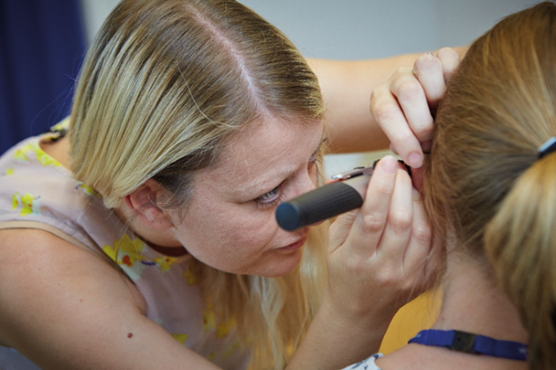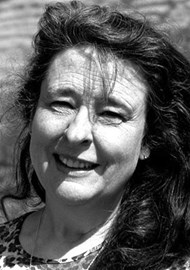Educational audiology provides a vital link between health and education by supporting children with hearing loss in educational settings. Joy Rosenberg presents an overview of the training route available in the United Kingdom.
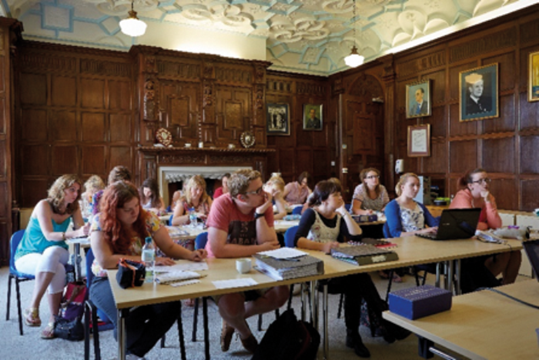
Students in lecture.
Educational audiologists greatly enhance the work of ENTs and clinical audiologists by bridging the gap between clinic, school and home; for babies, children and young people who are deaf. With the advent of integrated radio aid technology into personal hearing instruments and new quality standards for radio aids, along with the ongoing benefits of early identification, this joined-up working is becoming ever more essential.
This article discusses the context in the UK and other countries, the remit of an educational audiologist as well as routes for training and ensuring the future of joined-up services.
Context
Nearly 50 years ago, the 1970 Education Act transferred specialist audiologists for children, previously employed by health, to education. In these 50 years, educational audiology has become fairly well-established in western countries, China and Russia; and is a growing entity in low resource countries as well. Both educational and clinical audiologists are trained in the same courses which emphasise hearing sciences but also offer aspects of educational and language development in countries such as the USA and South Africa.
Since the 1990s, educational audiologists in the UK have had a bespoke postgraduate training programme at Mary Hare, established as a means of bridging the gap between the services of clinically trained audiologists, and Teachers of the Deaf (ToD). Audiologists are considered to be a natural fit on the literacy team as a logical extension of paediatric audiological practice, and some even surmise that education of the deaf is evolving into a primarily clinical discipline. In Paediatrics and Child Health, Simkiss describes educational audiology in the UK as key, citing the British Association of Educational Audiologists’ (BAEA’s) recognition of the wide variability of this specialist role [1].
“This educational audiologist ‘made all the difference in the world’ according to the parents as to how this child was able to function and, therefore, to his education and the family’s well-being.”
Roles and competencies
The BAEA publish roles and competencies for the profession that cover: child and family support, educational assessment, inclusion advice, inset training for both health and education, educational and personal amplification systems, multiprofessional working and audiological testing (www.educational-audiologists.org.uk/documents.php ). Variations in educational audiology roles exist across the country, from conducting or participating in regular clinics to classroom and liaison roles. Following are examples that demonstrate both the variation and the added value of this role. One educational audiologist wrote about a family she had served in her previous ToD role for several years. During her time on the educational audiology course, she began implementing strategies she learned by adjusting or enhancing her practice.
This educational audiologist ‘made all the difference in the world’ according to the parents as to how this child was able to function and, therefore, to his education and the family’s well-being. Educational audiologists have influenced clinical practice and training involving early fit of radio aids to babies and toddlers developing the programme through chronological phases. Others have involved ToDs and clinical audiologists in training for speech in noise testing. Still others have impacted the development of counselling concepts and skills with ToDs and parents of deaf children.
BSA recommended procedure demonstrated by student.
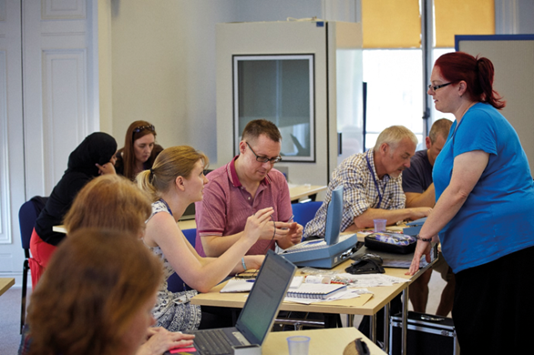
Electro-acoustic testing and hearing aid programming equipment.
UK training route
Mary Hare with the University of Hertfordshire offer an MSc/PG Dip in Educational Audiology, the only course of its kind in the UK [2]. It is endorsed by the British Association of Educational Audiologists (BAEA) as well as the British Academy of Audiology (BAA) and is currently seeking registration for the profession with the Registration Council for Clinical Physiologists (RCCP). The course trains students to become either an educational audiologist (a previously qualified Teacher of the Deaf) or an audiologist in education (a professional working in education but not a qualified ToD).
The course is part-time and comprises content including:
- Acoustics, anatomy and physiology
- Audiological assessment and habilitation
- Family-friendly assessment and habilitation
- Psychoacoustics, anatomy and physiology
- Clinical practice portfolio
Students have commented repeatedly that the clinical practice portfolio has been a gold standard for them in terms of meaningful learning. They have built professional multidisciplinary relationships, gained significant clinical skills related to assessment and hearing instruments, and contributed a great deal of knowledge about the educational environment of children to the health audiology teams. Students have submitted original dissertations of qualitative and quantitative research work on a wide variety of topics ranging from microphone placement of FMs to hearing aid refusal by adolescents (https://maryhare.org.uk/research-publications). Educational audiology dissertations have contributed new knowledge to the profession and, in some instances, have been a ‘game-changer’ for practice locally and/or nationally.
Faculty and guest lecturers include experts in educational and clinical audiology, education of the deaf, speech language therapy, early intervention, educational psychology and research. State-of-the-art technology and equipment is provided by manufacturers of hearing instruments, diagnostic and acoustics equipment, and assistive listening devices and systems. At least one manufacturer has provided scholarships for the course. Commendations from professional body endorsers, students and Heads of Services include:
- “The instructors are very knowledgeable and very skilled teachers.”
- “Demonstrations and development of practical skills are very clear in well-equipped lab sessions.”
- “Coursework was very applicable. It enabled me to enjoy and do my job well.”
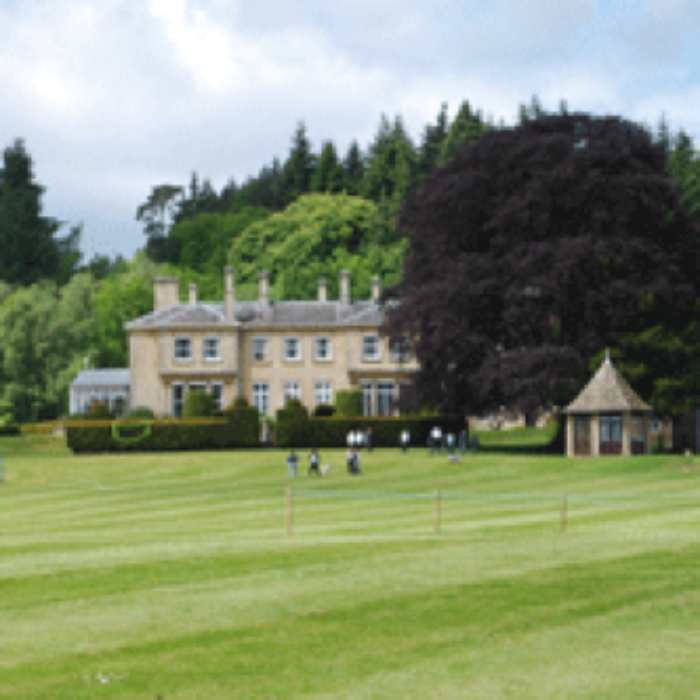
Residential programme held at Mary Hare School for the Deaf.
Future
Professional opinions of Heads of Educational Services and practitioners (ToDs, educational audiologists and paediatric clinical audiologists) were surveyed in regards to training and multidisciplinary working related to educational audiology [3]. Findings revealed that liaison roles linking health and education were undertaken by ToDs and/or educational audiologists in varying proportion, reflecting the structure of local services. Educational audiologists expressed concern about the future of services linking health and education, in light of funding cuts, lack of mandatory status for educational audiologists and lack of likelihood for take-up by Heads of Audiology Services (HoAS). Heads of Educational Services expressed concerns about service priorities (emphasising current staffing) and funding whilst citing preference for shorter-commitment update-related training.
”Educational Audiology dissertations have contributed new knowledge to the profession and in some instances been a ‘game-changer’ for practice locally and/or nationally.”
In terms of forecasting training for educational audiology, Heads of Educational Services indicated they favoured a stand-alone postgraduate module. The course’s university revalidation will likely include such options for 2019 and beyond, geared to clinical audiologists and others to ToDs; alongside the full postgraduate qualification. Lack of funding impacts training opportunities, but practitioners reported very positive motivation and emphasised the need for options in health and education training. Respondents considered the strong foundation and benefits of postgraduate professional education being cascaded into development of multidisciplinary practice, impacting service and intervention well beyond the duration of the course, and making powerful contributions to changing the future.
References
1. Simkiss D. Education of children with hearing impairment. Symposium: Special Needs. Paediatrics and Child Health, Elsevier 2013;23(10):434-7.
2. University of Hertfordshire partners: Mary Hare. Educational Audiology course.
www.herts.ac.uk/apply/schools-of-study/
education/partnerships-in-education/uk-education-partners
Last accessed June 2017.
3. Rosenberg J. Professional Opinions Survey in Lamb B. The role of sensory impairment support services and specialist teachers: The Future of the Sector. (In press 2017) Department for Education and National Sensory Impairment Partnership; 2017.
SUMMARY
-
Educational audiologists have added significant value to education of the deaf for the past half century by joining up health and education services.
-
Whilst funding cuts do impact on training for this non-mandatory qualification, stand-alone modules from 2019 onwards (alongside the Educational Audiology full postgraduate qualification) may offer both clinical audiologists and ToDs opportunities for development to aid multidisciplinary working.
-
The imperative now is to consider what can be done to ensure the future workforce and services for deaf children have the same or better opportunities going forward.
Declaration of competing interests: None declared.

